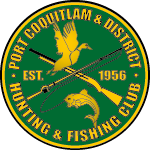Dear Members, we are dismayed at the Liberal government’s May 1st announcement that they are banning 1500 firearm models and types that are legally in owned by licensed and law abiding gun owners. We urge you to use your energies to fight back politically in the public arena and behind the scenes in your discussions directly to your representatives. To aid you in the fight please consider drawing from the following arguments here. We believe in sum that the government’s prohibition amounts to little more than security theater, a meaningless gesture that makes the Liberal minority government look good to their supporters and masks their own failure to keep the public safe by enforcing existing laws against gang violence, illegal gun trafficking, border security and their lack of investment in crime prevention, mental health and community building:
After the Nova Scotia tragedy, the government misses the mark by aiming at owners, not their own failures
The government is aiming at ‘low hanging fruit’, that is the already vetted and licensed two million gun owners in Canada who are already on the government’s radar. Yet by using the tragedy of the Nova Scotia shootings the government is masking its own failure at not stopping an unhinged individual who DID NOT HAVE A LICENSE and who ACQUIRED HIS GUNS ILLEGALLY from the United States. By making this about mass shooting tragedies they are trusting that the public will forget that the vast majority of violent firearms crime in Canada comes from gangs who smuggle in their illegal guns across a porous border. Instead of patching their own holes in failing to protect Canadians through existing laws, they are aiming at law abiding citizens.
The ban will do little to improve public safety and a lot to undermine public safety
Gun control activists would like Canadians to believe that they are at risk from guns every day but in reality the chance of an individual in Canada becoming a victim of violent gun crime is somewhere below being struck by lightning. And even at that mark, most Canadians understand that the the vast majority of gun violence comes from gang violence, the same gang violence that stems from lack of local policing, long-standing community issues, lack of opportunities and the drug trade. But solving these issues is hard, a task that the government would rather shirk and from which they would like to deflect criticism.
Gun owners do care about public safety, but what about existing laws?
Gun owners do care about the victims of violence which is why barriers to entry, vetting, and daily background checks have been accepted by owners as a legitimate cost of ownership. However, the government would like the general public to think that gun owners care more about things than public safety. The government is fond of saying the actions of individuals aren’t representative of the groups they came from, except when it comes to gun owners. But gun owners do care about public safety which is why we regularly are astonished that those who circumvent existing laws are not punished more severely and decry the lack of access to mental health resources for the most vulnerable. The fact is, the government would rather take credit for actions against gun owners than do the hard work of long-term crime prevention. The government could have enlisted owners in improving the safety regime but now see us as a group to be targeted.
The police are not okay with a gun ban
Given how unsupported existing laws are by the justice system, police will now be tasked with a monumental task of the gun ban. They are not okay with this. The police who use our ranges, the union of Police Chiefs are not okay with using their precious resources knocking on doors and seeking compliance from owners who have now been labeled by their government as potential criminals. The hundreds of millions of dollars that must be allocated to see this through will make the failed Long Gun Registry seem like a blip. When cities and agencies across the nation are already cutting back, taking officers off the streets to deal with the most vetted citizens is not only a waste of their time but it takes them away from real criminals, criminals who will continue skirting existing laws. In two years time when the local police agencies have a boondoggle on their hands will the Federal government own up to it or will they skip along to the next act of security theatre? Meanwhile Canadians will be footing the bill and our law enforcement will have their hands tied. Even those for who are completely against gun ownership should be concerned about the long term impact of this shift in focus will be practically on gun violence.
It is not about “gun rights” it is about the owners’ right to be treated fairly by their government
Your gun does not have rights but you do. You pay taxes, you have followed every regulation and law to become a vetted and safe owner. And now the government has named you the problem. While others may just ask you to ‘get a new hobby’ or to give up a thing, you have done everything to maintain the right. However, the present government time and again has used you as a convenient punching bag. You may not convince others to love the traditions you hold dear, but the government by laying the groundwork to confiscate your property without due process is treating you unfairly when you have been among the most law abiding individuals in the country.
Compensation is using your money to confiscate your property
While the government has promised compensation (without details), this is not free money. This is money you and other Canadians paid in taxes. This is money that is already being used for COVID supports at a time when millions of Canadians are already suffering economically and now the government wants to spend hundreds of millions of dollars in a useless gesture that takes property away from Canadians.
Using the Order in Council without debate is undemocratic and was underhanded
While the Prime Minister would like Canadians to believe they needed to do this in response to the Nova Scotia shootings, the timing could not have been better for them to avoid the democratic process. By using an Order in Council for such a far reaching policy, the government has avoided having to table legislation which would have been debated and voted on in the House and the Senate. During the current COVID crisis parliament is now limited to ‘virtual sessions’ and small in-person sittings of the House. In fact, through prior agreement with all parties only COVID legislation may be tabled for as long as the crisis continues. Taking away Canadians’ property now without the rigors of debate is unfair, underhanded and undemocratic. Leaving aside guns, this sets the table for other major policy changes by the government or for future governments to avoid questions from the opposition. Canadians should be rightfully concerned.
Why 1500 firearms?
1500 sounds good in the media and the greater the number the better the sound-bite and headline. In reality, the vast majority of those named are variants of the same pattern. Not only is this padding the number for the sake of publicity, it also needlessly enlarges the scope to firearms that have little to do with the others for the sake of adding one more line to the regulation. The fact that they include the S&W M&P22, a rim-fire rifle that only resembles an AR-15 in the mix is another sign that they have chosen cosmetics over substance. It is also an idiocy that the government has sought to ban firearms that have “a bore diameter of or exceeding 20mm”. In a reality, this impacts museum pieces, curiosities, used mortar and rocket launcher tubes that cannot be fired without controlled ammunition or were designed to be single-use. Adding these to the regulation is an absurdity.
‘These rifles are not used for hunting’
Time and again the Prime Minister and his cabinet have claimed to not impact farmers and hunters with this ban and have shown ignorantly they are unwilling to listen to Canadians who actually hunt. In the U.S. the AR-15 is used for hunting and it is only the law in Canada that made it illegal for hunting but even then the M-14, Mini-14, M-305 and multitudes of non-restricted rifles that are now prohibited have been used for decades in the bush by farmers and hunters. Not just semi-automatic rifles have been impacted; the ban on rifles that have a muzzle energy of “10,000 joules or greater” will now take away bolt action rifles that have been used for heavy game around the world, all to counter rifles that have been little used in violent crime in Canada. Finally, the fact that the government has given a waiver to aboriginals and those who rightfully need their rifles for subsistence hunting means they do recognize that these rifles are used for hunting.
Sport shooting is not going away
We each have pursuits and traditions that we would love to share with others but that others do not have interest in. Not all Canadians play hockey but most accept others have interests not their own. Not everyone engages in martial arts but most recognize not just the self-defense origins of karate and judo but their legitimacy as pure sports. Sport shooting has been on the rise for the past decade and every year numbers of licensees has increased, not decreased. While the Public Safety Minister Bill Blair claimed to recognize the legitimate pursuits of sport shooters, the sports of IPSC, IDPA and 3-Gun will be inordinately impacted. The government has ignored the utility of modular semi-automatic rifles in dynamic action shooting and the Prime Minister has suggested a municipal ban on handguns will follow. The government is engaging in double speak by saying they support target shooting and yet bans the most popular platforms.
The government seeks to divide us not unite us
While the government would like to paint a picture only rural Canadians will be affected by the ban in their claims of supporting “farmers” and “hunters”, the reality is that gun owners like the majority of their fellow citizens live and work in cities and safely store and transport their firearms every day. The government has calculated to appeal to their base among urban voters while permanently counting out rural ridings and without accounting for the impact of owners in the cities.

